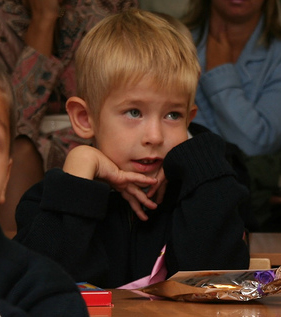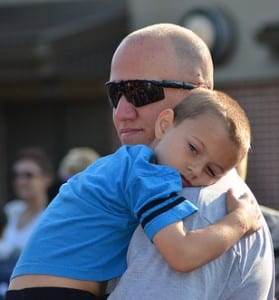This is the first in a series of posts dedicated to the wonderful world of kindergarten.
It’s the time of year when parents of pre-school aged children are thinking of kindergarten, and the Great Transition from pre-school/home to school. I still remember my own daughter’s first days of school in kindergarten. She had attended a great daycare service and I was confident that the transition to school would be seamless. Moreover, I was convinced my daughter would adapt without any difficulty since she already knew her letters, could read and count. What more do you need, right? Wrong. Though she was keen to go to school, that first day she came home tired and overwhelmed. That’s when I realised there’s more to this transition for her than meets the eye and that she would have benefited from a slower and softer landing into the BIG school. She would have been more at ease with a Progressive Entry.
This is when kindergarten teachers stagger student attendance over the first few days of school so that they can give each child more attention. We call it Progressive Entry, but I like to refer to it as part of a Welcoming Entry. It’s meant to help ease the stress of full day attendance in a new school setting, create a strong bond between child and teacher, and set the scene for a successful year.
Welcoming means to greet someone with a positive attitude or simple gestures that make the welcome heart-warming. Registration to preschool, the first step in the child’s admission to school, is in fact the first contact parent and child have with the school. This is where they’ll get a first impression and it’s the first opportunity the school has to make them feel welcomed.
The second opportunity is the start of the school year. These first few days have an impact on the child’s current and future motivation to go to school. For parents, those days often give rise to both pride in their child and uncertainty of what lies ahead for them this year. That’s why it’s important to be very attentive to these two moments of school life. A progressive entry can be part of the things a teacher and school should consider to make the child’s transition to school a success.
A bit of history
Mandatory full time kindergarten was officially implemented in 1997 in Québec with the arrival our new educational program for preschool education. Next year we’ll get to celebrate that 20th anniversary. We’ve come a long way since that first year when many school boards had to scramble to create their kindergarten facilities: adapted rooms, materials, bathrooms, playgrounds and more. The situation was such that the ministry allowed some schools to take as long as 20 days to gradually integrate the children into the school.
The idea of having fewer students, having them come to school for half days or fewer days at the beginning of the year is still something that teachers like to do because smaller groups allow the teacher to observe each child more closely, to interact more personally and to set about creating a bond with that child. For the child, the environment is new, the people are new and the day is more demanding and tiring. The child will profit from a soft landing in the new school environment, whether he/she has attended daycare or not.
Of course we’re no longer talking about 20 days! There are actually provisions in the Basic School Regulation for Pre-school, Elementary and Secondary Education (section 18) that allow schools to implement a gradual entry in preschool while meeting requirements regarding number of hours and number of days: 23.5 hours a week and 180 days out of 200 devoted to educational services (sections 16 and 17). That was originally a problematic requirement and a hindrance to implementation. But now, the first school days of the school calendar for children in preschool education can be used to allow them to enter school gradually. To simplify matters, each day or partial day used for gradual entry to school constitutes the equivalent of one day of class in the school calendar devoted to educational services.
So, in a nutshell, progressive entry is something teachers and schools can consider, both from a legal and educational perspective, when they plan their welcoming strategies at the beginning of the school year. As a parent, knowing that this option is available would have been a load off my mind.







